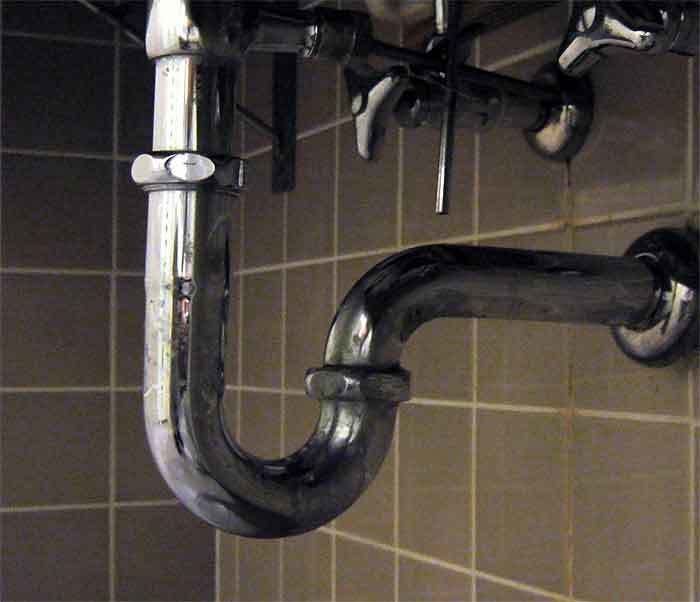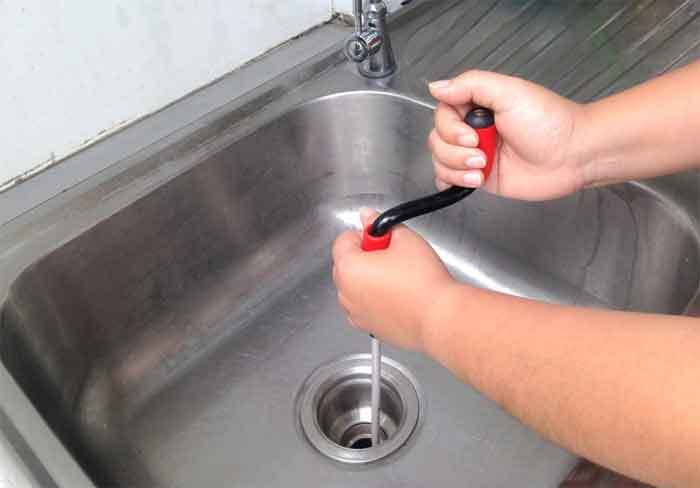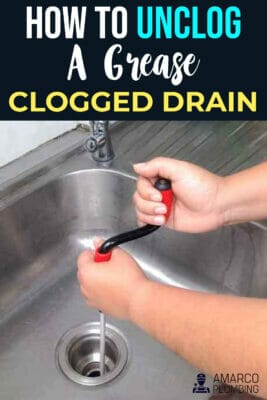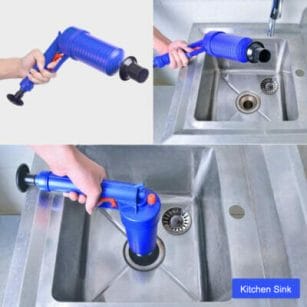Disclaimer: This post may contain affiliate links, meaning we get a small commission if you make a purchase through our links, at no cost to you. For more information, please visit our Disclaimer Page.
While this is very much a common problem, you’d be shocked at how huge of an issue this can be. A grease clogged drain is the sort of problem you end up having to deal with at some point in your life, without fail.
The fact is that it’s so nasty, hard to deal with and generally disgusting only makes it worse. The stench, the unhygienic terror of it, the sheer mess of it all is daunting.
The overflowing of water caused by grease is definitely not something anyone wants to deal with. Trust me, there have been a few experiences I'd rather forget, too.
One time, my kitchen sink basically produced a waterfall all on its own, with how backed up it had become. It turned into a mess of epic proportions, one where the neighbors had to get involved because it affected them too because they lived below me in the building.
It may even sound like you shouldn’t have to deal with these sorts of problems, right? You’re careful and meticulous, as well as clean and orderly…
But it doesn’t matter. There is almost no way to prevent these issues and they will happen.

Rather than dwell on that, let’s focus on the positive aspects here:
Prevention and Intervention
What Typically Causes It All
Generally speaking, you'll have issues with your kitchen or your bathroom sinks getting clogged up. Here are some reasons why that is and when it happens.
When talking about the kitchen, it’s inevitable that we have to mention these as the usual culprits:
Most of these, as you can tell, are fatty substances. Be it grease or be it oil, there’s a viscous feel to them that we often overlook.
After all, when you’re pouring them down the drain they’re usually hot, right? Maybe from hot dishwater or hot oil from the pan and so on.
This is where the problem comes in normally. They cool down, once they go down the pipes.
As they cool, they become more and more dense, thickening with every moment. This way they build up in your pipes without you even noticing.
This rings especially true around the P-trap (the curved pipe right beneath the sink) as the impact usually makes at least some of it stick.

While this is mostly the case with peels or other larger chunks of meat, vegetables and so on that go down the sink, you can rest assured that any and all of these harmful substances can stick to your pipes there.
It's a bit simpler, but no less dangerous for your pipes when it comes to the bathroom sink:
It may sound surprising, but all of these can contain lots of fat and oils, which damage the pipes as surely as the fat from before does. Often times, the ingredients can be harmless at first but build up over time.
First of all, hair tends to get drains clogged, because it’s saturated in your natural oils. Even the most luxurious and silky hair has to have protective oils over it, or it will be extremely brittle.
Due to this, it can stick and clump together causing a physical obstruction alongside the oils and any other things you may have in it.
Second of all, the soaps you use are, more often than not, based on fat. Animal fat, which tends to be very tricky on the pipes.
This is why soap scum tends to be so daunting for bathroom pipes, due to its sheer thickness.
Finally, some beauty products can be quite bad for pipes in their own right. The chemicals they use can sometimes dissolve a bit poorly in water, causing an issue in the pipes, when they get there.
How to Prevent this
Whether you’re dealing with the aftermath of a clog or want to delay or even prevent them completely, these tips are going to help you with your intentions:
How to Unclog a Grease Clogged Drain
Finally, we get to the meat of the matter. You’ve got a grease clogged drain and you need some quick and easy fixes for that problem. Here’s a selection of the best ones, both in terms of efficiency and ease of use.
1. The Plunger
It’s not exactly glamorous or exciting, nor do many people like using it. However, this is usually your best first bet.
It’s simple and it can usually help if it seems like there’s a complete clog or a fairly heavy partial one. Most of the time, it’s in the P-trap and a plunger is ideal for dealing with that.
It works because its suction and back and forth motion allows it to both draw in and then push out stuck particles. Be it grease or food chunks, this is usually how you can fix the problem.
The use is simple:
- Clear the surrounding area. Splashing and a general mess is very possible.
- Fill the sink roughly half of the way up with warm water.
- Plunge away until you feel a definite improvement. It’s usually signaled by louder and easier plunging that sounds like you’re just moving air.

2. A Plumber’s Snake or even just a Wire Hook
A bit of a step up in terms of finesse, this operates on a similar principle to the plunger. You want to make sure the blockage is dislodged.
While primarily used with bathroom sinks, this can also be used with kitchen ones if it seems like you have a small but stubborn clog. Usually, this can be the result of heavy fat or grease accumulating in one spot, which makes this targeted approach ideal.
It works because it punctures a hole or even removes the obstacle entirely. Be wary of being too hasty using this.
Generally speaking, you just remove the cover for the sink and then slowly insert the snake or wire. Prod and poke until you sense no resistance left but always be extremely careful and slow.

3. Warm Water and Dish Soap or Salt
People underestimate how useful warm water can be, especially in this situation. You’ll find there’s little that’s as effective as warm water combined with something else, in fixing the issue of your drains being clogged by grease.
What you’ll need:
- A half-gallon of boiling water (about 2 liters).
- Some dish soap or some salt, about a small cup’s worth at the most.
Keep in mind that these methods only work if there’s some movement, still. If there’s a complete clog, use the other 2 methods first.
This works because the water helps to melt any blockages slowing things down, while the dish soap further aids that or in the case of salt, acts as a way to scour things even further.
Ideally, you’d use both methods, dish soap then salt.
With dish soap, you need to boil the water and then mix it in. Pour that down the drain without rushing.

With salt, you need to dump it down the drain first, and then follow up with the boiling water, again poured slowly.
In both cases, multiple repeats may be needed and should be expected. For best results, do one or two rounds of both, swapping between them.
Conclusion: Unclogging a Grease Clogged Drain
Hopefully, this has taught you both how to deal with the problem and how to avoid ever having it again in the future.
If you end up unable to resolve it, don’t hesitate to dial the number of a good plumber or resort to more drastic measures like caustic drain cleaners. After all, problems can often be very unique.


